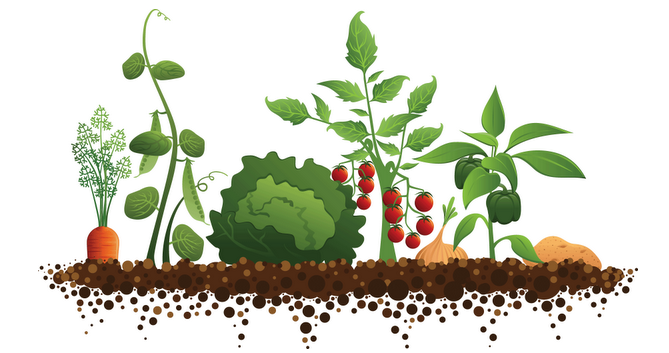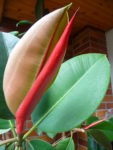April Gardening To-Dos
 The danger of frost should have passed, but be prepared for a surprise late freeze. April is the month that all warm season plants can be seeded or transplanted. It’s also the official start of regular lawn mowing and irrigation. See below for other things that should be on your April gardening to-dos.
The danger of frost should have passed, but be prepared for a surprise late freeze. April is the month that all warm season plants can be seeded or transplanted. It’s also the official start of regular lawn mowing and irrigation. See below for other things that should be on your April gardening to-dos.
Things to Do This Month |
|
FERTILIZE |
Fertilize lawns after the second mowing according to soil test results. Apply fertilizer to blooming trees or shrubs when blooms have faded according to soil test results. |
WATER |
Begin regular water schedule if spring rains have not arrived. Monitor new seedbeds and transplants and water them as needed. |
PLANT |
Seed remaining warm-season vegetables like okra, set out sweet potato slips late in the month. Plant warm season bulbs like caladiums and fall bloomers like oxblood lilies. Plant summer annuals and set out hanging baskets. Move container plants outdoors but monitor for late frost. |
SOIL |
Mix in compost to the top layers of vegetable, flower, and ornamental beds. Apply a three to four inch layer of mulch to deter weeds, hold moisture and moderate soil temperature as summer approaches. |
LAWNS |
Plant turfgrass seed to cover bare patches or create new lawns. Begin regular lawn care. |
DISEASES/PESTS TO LOOK FOR |
Harlequin bugs will appear on cole crops as the temperatures warm. Rather than spraying, pull up and compost the plants since they are at the end of their harvesting season. Caterpillars will be out in full force this month, many of whom become beautiful butterflies. Treat only those plants that are not larval hosts to our native pollinators. You can see a list of Austin butterfly plants here. Sooty mold, black spot, and powdery mildew may also start to appear. Consult the Grow Green FAQ sheets for least toxic solutions. Aphids, white flies, and spider mites may also start to appear in greater numbers. Control them with regular water blasts to the undersides of leaves. Watch out for fire ants, they become more active after a rain. |
MAINTENANCE |
Spring bulbs will rapidly fade in the heat. Allow their foliage to completely die before lifting or cutting back. Be sure to leave grass clippings on the lawn to maintain soil organic matter. Cut back leggy herbs and perennials, deadhead flowers. Prune flowering trees, shrubs, and roses when they have completed blooming. Keep up with weeding and don’t let them go to seed. Reducing the seed bank at this time will help control weeds for the rest of the year. |
IN THE VEGETABLE GARDEN |
You can still plant eggplant and pepper transplants this month. Extend your bush bean harvests by planting a short row of seeds a week or two apart. Fertilize corn when it is one to two feet tall, and hill some soil around the corn stalk base to help anchor them. Harvest the last of your winter vegetables so that you can transition into warm-season plants. Sweet potatoes can be planted any time in April or May. Look for slips at local nurseries, from online sources, or sprout your own. Fertilize tomatoes with a water-soluble fertilizer every 2-3 weeks to encourage vigorous growth. See the full Vegetable Garden Planting Guide (Español, 繁体中文) and Vegetable Varieties for Central Texas. |
Your April Indoor Gardening Checklist |
|

You should start to see new growth this month. |
|
FERTILIZE |
Increase fertilization to twice monthly to help support new growth. Be careful not to over fertilize. Follow recommendations on the plant label if you still have it. |
WATER |
April Showers bring May flowers and also a fantastic opportunity for collecting rainwater! Place buckets outside to collect some rainwater for your houseplants! Even better, place them outside if its warm enough and let them enjoy the rain! With higher humidity, plants may need less watering so remember to adjust your watering schedule. Try the toothpick or chopstick trick to ensure the top few inches of soil have dried before watering. |
HUMIDITY |
April can be rainy and Central Texas is humid! Reduce the use of humidity trays and humidifiers if necessary. |
FOLIAGE CARE |
You should start to see new growth this month! As in other months dust leaves to remove any debris. Take care not to spray leaves directly with tap water as some Central Texas water may be higher in salt or other minerals. Use distilled or spring water instead. |
DISEASES/PESTS TO LOOK FOR |
Inspect undersides of leaves for pests. Aphids may start to appear as weather continues to warm. Wipe away any you may see with a moist damp cloth or with a strong blast of water. In extreme cases cut away foliage and discard. Quarantine affected plants to reduce spread. |
MAINTENANCE |
Remove any dead, damaged or dying leaves. Removing spent leaves encourages new leaf growth. As the days grow longer remember to move plants closer to windows. Take care not to expose them to harsh afternoon sun. Rotate plants frequently to encourage bushier growth. Plants may benefit from a short period of natural sun exposure. Take them outside if weather permits but place them in a protected location while they acclimate to the outdoor environment. Gradually increase the light intensities over a 4-to-8-week period. This process is called acclimatization. Once your plants are outside, consider leaching them by pouring double the container size of water to wash excess salts our of the soil. Never fertilize before leaching because the fertilizer will be washed away. Leaching should be done every 4 to 6 months. |
 As a contributor to Central Texas Gardener (CTG), Daphne Richards, County Extension Agent-Horticulture, answers questions and shares knowledge on new and tried & true plants for Central Texas. Check out some of our favorites for April!
As a contributor to Central Texas Gardener (CTG), Daphne Richards, County Extension Agent-Horticulture, answers questions and shares knowledge on new and tried & true plants for Central Texas. Check out some of our favorites for April!
 What is Slime Mold|Daphne Richards|Central Texas Gardener
What is Slime Mold|Daphne Richards|Central Texas Gardener
 Sterilizing plant pots|Daphne Richards|Central Texas Gardener
Sterilizing plant pots|Daphne Richards|Central Texas Gardener
 Seed starting tips|Daphne Richards|Central Texas Gardener
Seed starting tips|Daphne Richards|Central Texas Gardener
Get Growing!
Lao Tzu, Chinese philosopher and poet wrote, “Nature does not hurry, yet everything is accomplished.” This handy reference will help you accomplish your gardening goals and serve as a guide for what things to do in the garden each month: January, February, March, April, May, June, July, August, September, October, November, and December.
